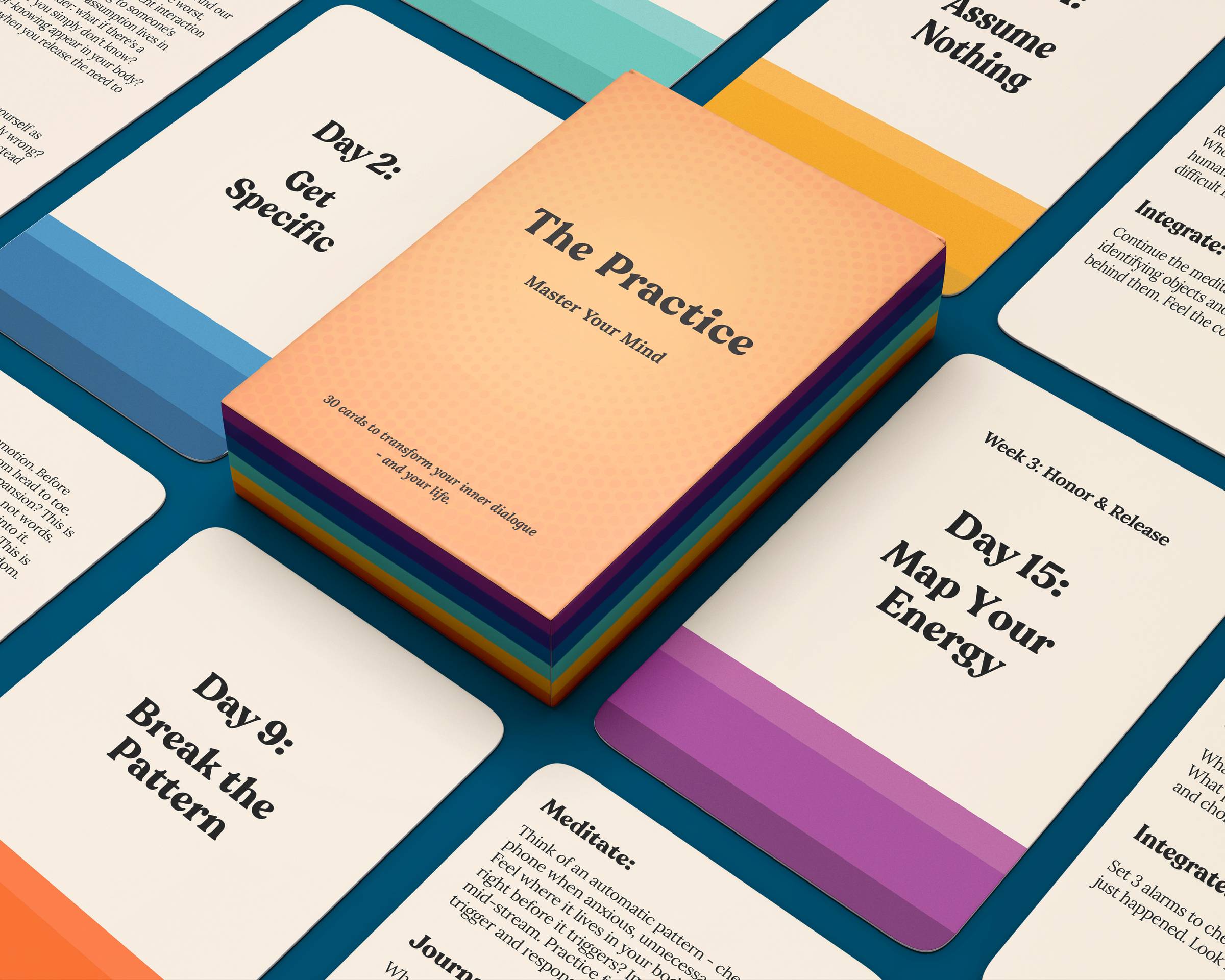I’ve been sending free weekly emails for years. If you’ve received value, please consider contributing $5.
I’ve been crowdfunding for two weeks now and after spending five hours straight individually emailing people yesterday, let’s just say I’ve learned a lot about how to ask people for money. And more importantly, how to not feel awkward doing it.
Yes, even me, Ms. Ladies Get Paid, can feel uncomfortable even when it’s for something I believe in as much as The Practice.
But somewhere around my 200th email, I had an ah-ha moment. I no longer felt like I was burdening them with my ask.
Instead…I felt connected.
The Real Problem (It’s Not What You Think)
Here’s what I realized: It was never actually about the money.
When we feel awkward asking for money, we’re really struggling with three deeper issues:
- Socialization: We’ve been taught that asking for anything makes us a burden
- Money’s emotional weight: Money represents freedom, power, control, and worth—all the things we have complicated relationships with
- Scarcity Mindset: We believe more for us means less for them
The breakthrough came when I stopped seeing fundraising as “asking for money” and started seeing it as something else entirely.
The Mindset Shift That Changes Everything
Before: “I need to convince people to give me money”
After: “I have an opportunity to connect with people who share my values”
This reframe works whether you’re asking your boss for a raise, pitching investors, or requesting support from friends. The person across from you isn’t an ATM—they’re someone with their own goals, values, and motivations.
When I wrote those emails about my Kickstarter I wasn’t thinking about the $28,000 I need to raise. I was thinking about the person receiving it—someone who bought my book, someone who cares about building better work lives, someone who might need The Practice as much as I believe they do.
Similarly, when you ask for a raise, you’re not just asking for money. You’re proposing a partnership that helps your company retain talent, achieve goals, and invest in proven results.
Suddenly, every interaction transforms from extraction to connection.
What to Tell Yourself (The Internal Game)
When you need to ask for money—whether it’s a raise, investment, or support for your project—try these reframes:
- Instead of: “I’m bothering them”
- Tell yourself: “I’m offering them a chance to be part of something meaningful”
- Instead of: “They’ll think I’m greedy”
- Tell yourself: “I’m honoring their values by giving them this opportunity”
- Instead of: “I’m not worth this amount”
- Tell yourself: “This isn’t about my worth—it’s about the value I’m creating”
What to Tell Them (The External Game)
Let’s breakdown the elements of my Kickstarter email so you can see how I hopefully turned a request for money into an opportunity for connection:
- I made it personal: “I’m personally emailing you because…”
- I connected to their values: “You clearly care about building a better work-life…”
- I shared the bigger picture: “helping Ladies Get Paid grow into the movement it is today”
- I was vulnerable: “I know reaching out for money feels vulnerable—even for someone who runs Ladies Get Paid”
By the time I made the actual money request, it no longer felt like asking for money—it felt like inviting them into something we both cared about.
Your Action Plan
Whether you’re asking for a raise, seeking investment, requesting a loan, or launching a campaign, this framework applies:
Step #1: Remove “money” from the equation mentally. What are you really offering or asking for?
Step #2: Connect with the person’s values. Why would they care about this beyond the transaction?
Step #3: Be specific about impact. What happens if they say yes? What happens if they don’t?
Step #4: Show vulnerability. Acknowledge that asking feels hard, and explain why you’re doing it anyway.
Step #5: Make it easy to say yes (and okay to say no). Give clear options and remove pressure.
How This Looks in Real Life
Asking for a raise:
- Instead of: “I need more money to pay my bills”
- Try: “I’d like to discuss my compensation because I believe aligning my pay with my contributions will help me continue delivering the results that matter to you—like the 30% increase in client retention I drove last quarter”
Seeking an investment:
- Instead of: “I need $50k for my startup”
- Try: “I’m looking for a partner who believes in solving [specific problem] for [specific people]. This investment allows us to help 500 more families in our first year”
Freelancer rate increase:
- Instead of: “I’m raising my rates”
- Try: “I want to continue creating exceptional results for you. To do that sustainably, I’m adjusting my investment to reflect the value I’m bringing—like the 40% increase in engagement we achieved together”
The Bigger Truth
Whether you’re asking for a raise, pitching investors, or launching a crowdfunding campaign, remember this: people want to support things they believe in. Your job isn’t to convince them to care—it’s to connect with the people who already do.
When you shift from “I need money” to “I’m creating value for people who share my vision,” everything changes. The awkwardness dissolves because you’re not taking—you’re giving people a chance to participate in something meaningful.
Your Turn
Think about any money conversation you’ve been avoiding—whether it’s a raise, a rate increase, or asking for support. Now reframe it:
- What value are you actually proposing to create or exchange?
- What shared goals or values connect you to this person?
- How does this request benefit them, not just you?
The world needs what you’re building and the value you bring. Don’t let discomfort around money keep you from having conversations that could change everything.
Please Support
The Practice is a set of cards that uses neuroplasticity and somatic techniques to transform your inner dialogue in 30 days.
Each color-coded card targets specific blockers—overwhelm, perfectionism, procrastination, self-doubt—giving you immediate relief and lasting change. And yes, it’s therapist reviewed + approved!
I need to raise $28,000 by October 19th through Kickstarter and we’re only at 15% of our goal with less than a month left. Since Kickstarter is all-or-nothing, if we don’t hit our target, The Practice won’t happen—and no one gets the tools they need.
Two ways you can help right now:
With gratitude and vulnerability,
x Claire
|
|
|
Looking for a job?
Dreaming of a (potential) new career?
Preparing to negotiate?
Seeking guidance?
|




